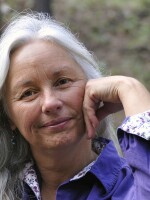Astrobiologist Daniel Apai turns to the natural world for solutions to climate change. Lately, he’s been investigating one of Earth’s most basic lifeforms—abundant ocean-dwelling algae called coccolithophores.
What began as a hobby for Apai has become a serious pursuit. He and colleagues at the University of Arizona have formed a team called Atmospherica. They focus on single-celled marine algae that absorb carbon and calcium from seawater to cover themselves in protective shells.
A small percentage of these organisms fall to the ocean floor and form deposits that last millions of years. This serves as a significant storage bank for earth-warming carbon dioxide.
Compared to trees, for example, these algae grow and multiply very quickly, which makes them good candidates for sequestering CO2.
So far the group has devised a system to grow the algae in bioreactors in a lab. The next step is to build greenhouses at the university and the Biosphere 2 facility in southern Arizona to see how much net CO2 can actually be removed from the atmosphere.
Their bigger dream is to scale up the process by installing solar-powered bioreactors near oceans or desalination plants, drawing on readily available saltwater to grow coccolithophores. If it proves efficient and cost-effective, the method could extract megatons of CO2.
Reducing overall fossil fuel emissions is the first priority, but at this point will not be enough, Apai says. He and his team pin their hopes on small, humble algae to make a sizable dent in one of the planet’s biggest problems.







